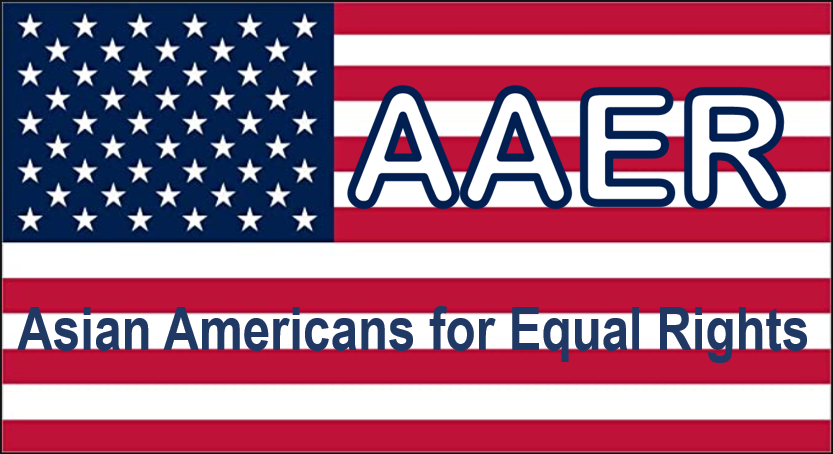The Perpetual Foreigner Bias
Asian Americans are often treated as foreigners, even for those who have been here for many generations. Wilson Lee, co-founder of the Chinese American Heritage Foundation, is a fifth generation Chinese American whose great great grandfather was a railroad worker of the transcontinental railroad. People often assume that he is a foreigner, and he is worried that his grandson, a seventh generation Asian American, will be treated the same.
This perpetual foreigner bias is at the heart of many tragedies in history.
- The Chinese Exclusion Act happened because Chinese (and later extended to Asians) couldn’t be Americans;
- During World War II, Japanese Americans were sent to concentration camps en masse, while German nationals in the United States, who were indeed foreigners, were given the benefit of due process;
- The murder of Vincent Chin. Some say Ronald Ebens made a mistake when he thought Vincent was Japanese while Vincent was Chinese, but the real mistake was that Ronald Ebens assumed that Vincent was a foreigner while he was an American, working in the same industry and sharing the same concerns about the U.S. auto industry.
Helen Yang, Vice President of the AAER and CALex (Chinese Americans of Lexington), talked about the perpetual foreigner bias in this speech in 2021, and this speech in 2020.
Houze Xu, co-President of Chinese Americans of Massachusetts (CAMA) and President of CALex, gave this speech at the National Solidarity Rally on May 31, 2021, to address the importance of teaching Asian American history and stories in K-12.
Constructive Ethnic Studies
It is important for K-12 students to learn how all races have contributed to the American history (click here) through constructive ethnic studies.
According to the Alliance for Constructive Ethnic Studies, the goals of constructive ethnic studies include:
- Enable students of color to see themselves in history and social studies
- Build unity and bridges of empathy, respect, and understanding across ethnic groups
- Encourage appreciation for ethnic group contributions and accomplishments
- Empower students to overcome challenges by learning how ethnic groups have overcome challenges in the past
- Confront racism and bigotry with a range of possible solutions, and enable students to become motivated, engaged community members
Foundation Against Intolerance and Racism (FAIR) publishes a set of learning standard for K-12 by age group (click here). To learn more about FAIR, click here.
To learn more about the Alliance for Constructive Ethnics Studies, click here.
Massachusetts Proposed Bill S. 365
While constructive ethnic studies promote the right mindset, some people are pushing for a different kind of ethnic studies.
In Massachusetts, the proposed Bill S.365 calls for ethic studies but the languages is highly politicized. Furthermore, it calls for an establishment of a committee representing different groups including the Commonwealth Asian American Commission (AAC). The AAER has voiced the concern that many people on the committee will be activists with a political agenda. For example, the current AAC, which made an official statement that Asian Americans are white adjacent hence enjoy the white privilege, can not be trusted to represent Asian Americans.
AAER and allies have been working with Massachusetts State Legislators to help them understand the differences between Constructive Ethnic Studies versus Critical Ethnic Studies. Click here for AAER’s meeting with State Senator.
The AAER proposes to use the model curriculum provided by the Alliance for Constructive Ethic Study and Foundation Against Intolerance and Racism (FAIR). There is no need to waste taxpayer money to create more bureaucracy and reinvent the wheels.
Click here for AAER’s letter to Mia Howerton, Deputy Director at U.S. Department of Education on May 16, 2021.
Constructive vs. Divisive (Critical) Ethnic Studies
In California, ethnic studies in most of the state have been done through the lens of dividing people to oppressors and oppressed, instilling guilt for one group while promoting victimhood of another group, hindering the progress of both groups. This approach is often known as the “Critical Ethnic Studies”. While much of California has adopted the “Critical Ethnic Studies”, Los Angeles is one exception that has adopted the Constructive Ethnic Studies.
In short, Constructive Ethnic Studies bring people together, while the Critical Ethnic Studies divide people. Constructive Ethnic Studies inspire people to lift up themselves and others and to change the world for the better, while the Critical Ethnic Studies put people down.
Ethnic studies, when properly taught, helps children build the right mindset that people of all colors are part of the fabric of America. However, Critical Ethnic Studies divide people. By promoting guilt in one group and victimhood in another, it pits one group against another, which does not solve problems.
